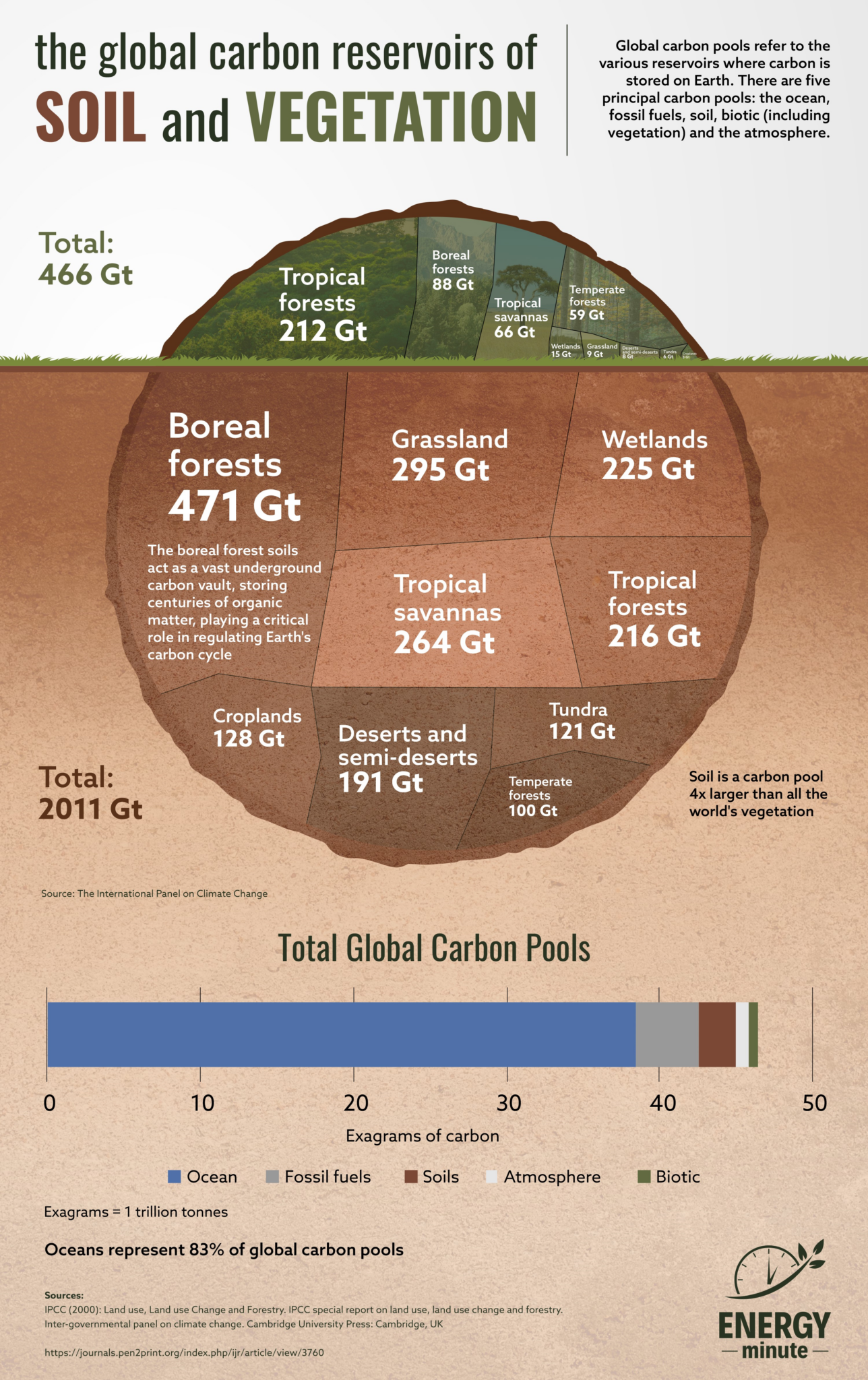By Aaron Foyer

Courtesy of ENERGYminute
See more articles and infographics from ENERGYminute HERE
Global carbon pools refer to the various reservoirs or storage areas where carbon is stored on Earth. Understanding these carbon pools is crucial for comprehending the carbon cycle, which plays a fundamental role in regulating the Earth’s climate.
- Atmosphere: The atmosphere contains carbon dioxide (CO2) and other greenhouse gases. Human activities, such as the burning of fossil fuels and deforestation, release carbon stored in fossil fuels and trees into the atmosphere, contributing to global warming.
- Terrestrial biosphere: This pool includes all living organisms on land, such as trees, plants, and soil microbes. Plants absorb CO2 from the atmosphere through photosynthesis, storing carbon in their biomass. When plants die or are consumed by animals, the carbon is transferred to the soil or the atmosphere.
- Soil: Soils contain a significant amount of carbon in the form of organic matter. This carbon comes from dead plant material and is stored in the soil for variable lengths of time, depending on factors like climate and soil type. Boreal and tropical forests, as well as wetlands, are important soil carbon reservoirs.
- Ocean: Oceans are the largest carbon pool on Earth. They absorb and store large quantities of carbon dioxide from the atmosphere, acting as a critical buffer against climate change. However, increasing CO2 levels can lead to ocean acidification, which poses significant threats to marine ecosystems.
- Fossil Fuels: Fossil fuels, such as coal, oil, and natural gas, store carbon that was buried millions of years ago. When burned for energy, this carbon is released into the atmosphere as CO2, contributing to the greenhouse effect and global warming.
Why are carbon pools important?
Carbon pools play a pivotal role in regulating Earth’s climate by acting as natural carbon reservoirs. For example, forests absorb carbon dioxide (CO2) from the atmosphere during photosynthesis, locking it away in trees and vegetation. This not only mitigates the greenhouse effect but also supports biodiversity and sustains vital ecosystem services. Oceanic carbon pools absorb substantial amounts of atmospheric CO2, helping buffer the impacts of climate change, albeit leading to ocean acidification.
They also underpin ecosystem health and resilience. Terrestrial carbon stores in soils and vegetation contribute to soil fertility and nutrient cycling, enhancing the productivity of agriculture. On top of bolstering biodiversity, carbon storage in wetlands and permafrost prevents the release of stored carbon into the atmosphere.
Sources:
https://www.ipcc.ch/report/land-use-land-use-change-and-forestry/
https://journals.pen2print.org/index.php/ijr/article/view/3760
Share This:
Next Article




